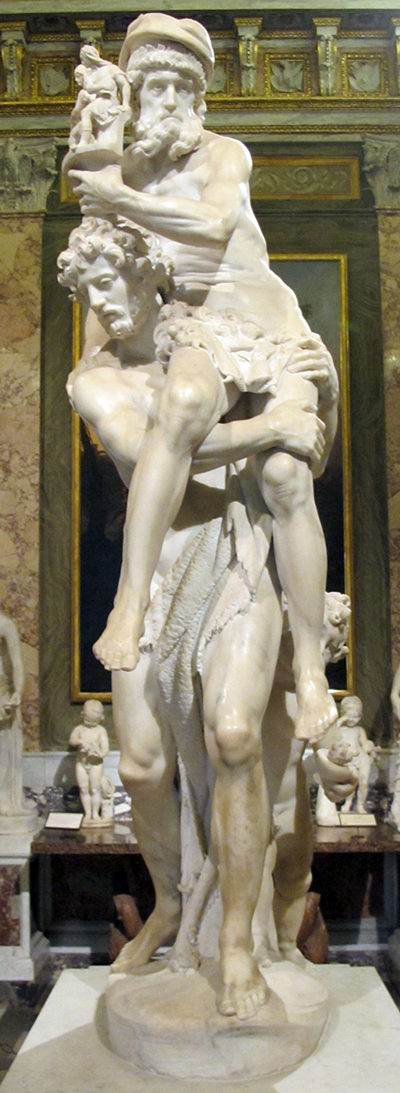Aeneas, Anchises, and Ascanius, a sculpture by Gian Lorenzo Bernini, was created c.1618 to 1619. The sculpture is housed in an art gallery located in Rome called Galleria Borghese.
It depicts a scene from Virgil’s Aeneid (a Latin epic poem), where the hero known as Aeneas leads his beloved family from burning Troy. It's always believed that Gianlorenzo Bernini had help from Pietro Bernini, his father when he was 20 years old. Through Pietro, Gian Lorenzo Bernini was becoming popular in Rome higher circles. The Pope even commissioned Pietros' famous Mannerist sculptures.
Through minor commissions for Camillo Borghese (Pope Paul V), the sculptor was recognised as being promising. The Pope could not believe a young boy was capable of sculpting that type of artworks. The sculptures, particularly the antique ones, eventually caught the attention of Scipione Borghese, who was next to Pope Paul V. Cardinal Scipione also loved money, arts and male physical beauty. It's also believed that Aeneas, Anchises, and Ascanius is influenced by previous works of other artists. Since he was just 20 years old when he completed the work, it’s normal to see that the execution-style still owed much to works of other artists.
Michelangelo's Christ's figure (Santa Maria sopra Minerva) has served as an example for Aeneas figure. Aeneas' head also corresponds with John the Baptist (the Sant'A ndrea della Valle-based Cappella Barberini) by Pietro Bernini. Also, it's believed that it has elements derived from the Borgo by Raphael (Vatican Museum in Stanze di Borgo) plus Barocci's Flight of Aeneas interpretation (Villa Borghese). The Bernini sculpture's stance also looks more like Pietro's Saint Matthew with Angel. Ascanius right foot and Aeneas left foot are standing forward, while in Saint Matthew by Pietros, the stance is mirrored, but the same.
The life-sized group displays 3 Aeneas family generations. Aeneas is the young man seen holding a man on his shoulder. He is gazing down to the side, and this is with a strong determination. The lineage of Aeneas from the gods, Aeneas is his mother, is emphasized by the lion skin draped that's around his body. The skin of a lion commonly stands for power; it’s usually related to Hercules, who was a descendant from Zeus.
The inspiration of Bernini for this work was the Latin epic poem, Aeneid, which tells Aeneas’ story. Aeneas was a Trojan who had left his city and finally ended up Italy; here, he became the forefather of the Romans people. In this sculpture, the exact scene depicted is when Aeneas is carrying his father, Ascancius (his son) and the elderly Anchises from Troy after the Greek army has sacked the city. In his hand, Anchises is carrying a vessel with the ashes of his ancestor, on the top where there are 2 small statues of Di Penates, who are Roman household gods.
It was Bernini's first commission from Scipione Borghese, and it probably began around 1618 and was complete the following year. Also, it’s one of the sculptures that were taken to Villa Borghese, which is now called the Villa Borghese.




